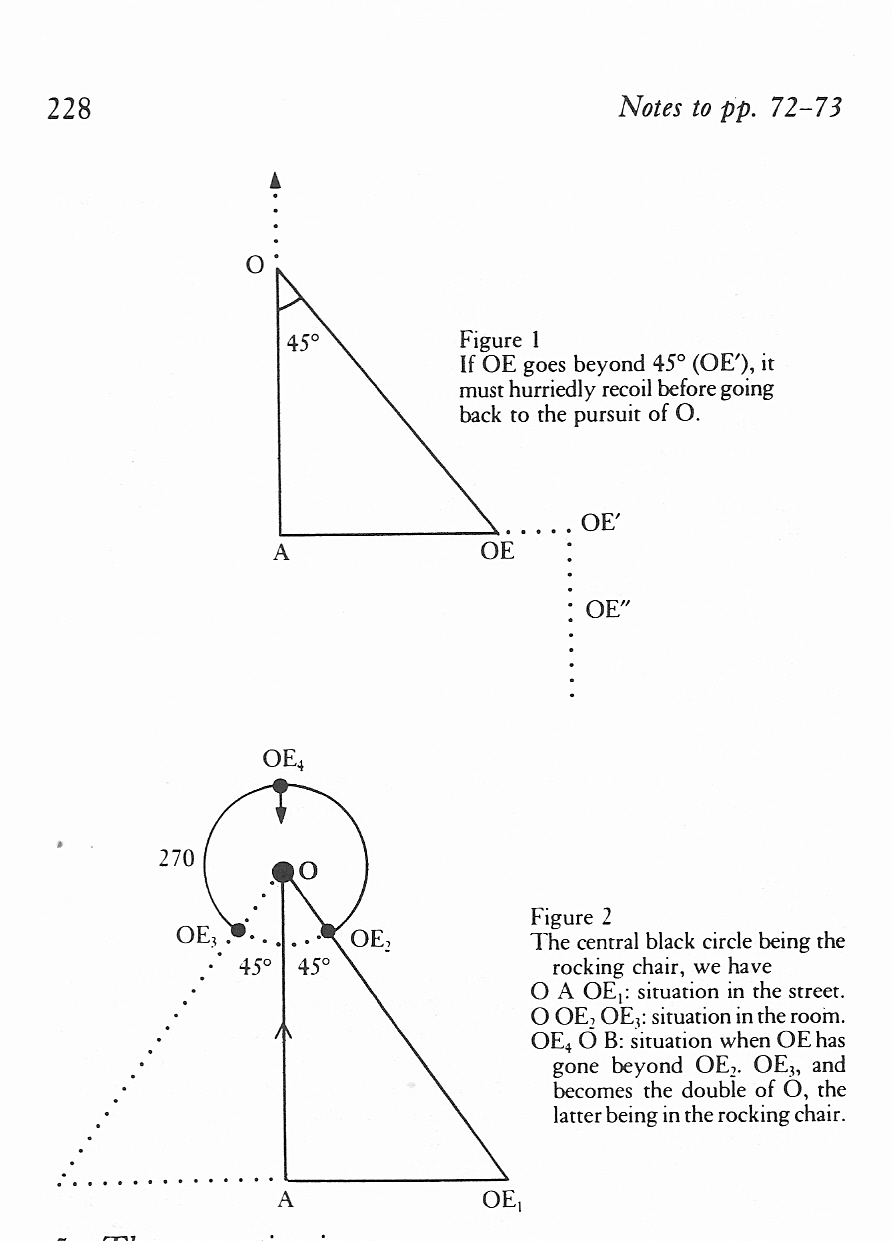|
[You can watch all 17 minutes of Film here and see if you read it as Deleuze does. It is a convenient example to match with the extraordinary levels of interpretation Deleuze offers. Deleuze says Film is: an astonishing attempt...[to] rid ourselves of ourselves, and demolish ourselves...[Like Berkeley] to be is to be perceived, declares Beckett... But can one escape [from being the object of perception], given that one perception at least will subsist as long as we live, the most awesome, that of self by self?... [The bit where the character scurries along hugging a wall, filmed only from the back, is]...a perception of action, an action-image...[The bit where the character enters the room and goes round closing windows, covering mirrors and evicting pets, filmed largely from the back with the camera not intruding past 45 degree angles, is]...the perception of perception or the perception-image...in a double system of reference...[Then]... the character...is finally seen [by the camera] from the front ...[and] ...the last convention is revealed: the camera...is the double of [the character], the same face, a patch over one eye (monocular vision) with the single difference the [character] now has an anguished expression and [the camera] has an attentive expression...We are in the domain of the perception of affection: the most terrifying, that which still survives when all the others have been destroyed: it is the perception of self by self the affection-image...So – OK this is pretty dense but in essence it is about how perception of ourselves, our identity if you will, is commonly seen as something under our subjective control but is in fact a reflection in the eyes of others or the surfaces of objects [an old sociological argument]. Camera movements and the relation of the camera to the character show the slow revelation of this truth.The camera sticks at first to the conventions of subjective perception, related to the character's view or perception.But then it breaks free: But it is at this moment, the third and last, that the greatest danger is revealed: the extinction of subjective perception has freed the camera of the 45° restriction… It advances beyond… But each time wakens the character [who brings it back under control]... finally, taking advantage of O's torpor OE succeeds in coming round to face him... The end [fade-out on the character rocking in a chair and a close-up eye] suggests – death immobility, blackness. But, for Beckett, immobility, death, the loss of personal movement and of vertical stature...are only a subjective finality...only a means in relation to more profound end. It is a question of attaining once more the world before man...the position where movement was...under the regime of universal variation, and where light, always propagating itself, had no need to be revealed...[Proceeding to ] the extinction of action-images, perception-images and affection images, Beckett ascends once more to the luminous plane of immanence, the plane of matter and its cosmic eddying of movement -images. He traces the three varieties of image back to the mother movement-image...Beckett’s originality is to be content to elaborate a symbolic system of simple conventions [how much the camera can reveal of the character] – according to which the three images are successively extinguished – as the condition which makes possible this general tendency of experimental cinema (66—68).There are two references in this section to Beckett’s own commentary on the film –both in French. They offer Beckett’s own analysis – too limited says Deleuze, not enough ‘to represent the set of all the movements’ (n32, 227) and shown in the first diagram, Figure 1. It seems it was Fanny Deleuze who completed the picture with a diagram (actually a diagram of the diagram or drawing of the machine) as Figure 2. Incidentally, keen readers will note there is no point B on Figure 2, despite being mentioned in the notes. I think it should have gone bottom left extending the line OE1, A to the left.  One (!) thing still puzzles me –why did Buster Keaton (for he is the character) still retain his trademark battered boater? Also -- were any pets slightly upset in the shooting of the film? back to rhizo6 |